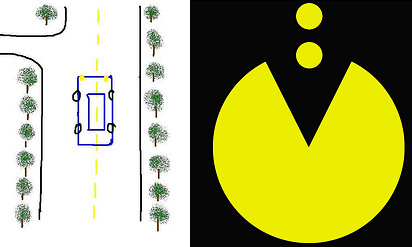I had a great trip to India a couple of months ago. Before I flew out of Seattle, I was a bit skeptical about how I would like my time there. I was going back after 2 years, and given the pace at which India runs, a whole lot could have changed, or may be, nothing at all! I wasn’t sure how my perspective of looking at things had changed in the last two years I had spent in US. The first and the most striking of these things was the traffic.
Traffic is the first real Indian experience you have once you are chucked out of the comfortable seats of the aircraft with overly courteous air hostesses and the supposedly good Indian food. Survival of the fittest is the name of the game on Indian roads. Everyone is in a hurry, trying to get somewhere and no one knows for sure what the traffic rules really are – heck, nobody really cares what they are! The only time that we spend educating people about traffic rules in India is in a 15 minute session by a middle school teacher in standard 5. ‘Drive on the left side of the road’ – that’s the only rule that I know for sure exists – not always followed but a large majority of people know about it. An Indian driver doesn’t really understand why the road is painted with different lines in various places. He doesn’t know because nobody told him. So, he makes up his own hypothesis of what the lines are supposed to be used for. My personal favorite is the case of the lane divider dotted line. An Indian driver – in most of the cases – does not know (or not care) that the line is supposed to divide the road into various lanes. A line in the middle of the road actually serves as a great line of reference for him to make sure that the car is going straight. So, he decides to drive his car ON the dotted line all the time – half of his car sitting in one lane and the other half in another lane. And it’s not like I am saying this because I had one bad experience with a bad driver in India. My findings are supported by a good amount of empirical data (at least 5 drivers) gathered during my trip to India. Sitting in the front seat of the car, next to the driver, I couldn’t help but feel like a pacman gobbling up all the dots in the line, not missing a single one and enjoying it all the while. And it wasn’t just me showing the love for the delicious dots on the road. There were a whole lot of other pacmans on the road. Indian roads seemed to be swept over by something I now like to call The Pacman Phenomenon.

If you looks a bit more closely, you’ll find that there’s a huge difference in the basic mindset of an Indian driver and an American driver. Driving in India – I would like to say – is very defensive. I know that I am contradicting myself by calling driving in India a survival of the fittest game and then calling it defensive. But that’s the beauty of it – an Indian driver has to be defensive to save himself but he doesn’t really care about what other drivers are doing – he keeps killing other animals on the road and keeps safe by saving himself from them at the same time. Take for instance, the common example of changing lanes. In America, it’s a very widely accepted rule that if you are changing lanes, you are responsible for making sure that other drivers are not affected by it. A driver driving in the next lane just keeps on speeding away and you adjust your lane changing move according to where he is. In India, on the other hand, this driver in the other lane has to make sure that he doesn’t get killed because a car in the next lane decided to change lanes. It’s a very widely accepted rule that the car in the next lane is not expected to check before making the move. It’s everyone’s responsibility to keep themselves and only themselves from getting killed. And that is why I call this kind of driving defensive. Obviously, both Indian and American systems work – well, people have been driving on roads in these two countries for decades now. But, I personally believe that an anarchical traffic system like India’s only leads to a higher number of accidents, a high mortality rate, higher stress levels, more traffic jams, and a longer commute time on average.
I am surprised your road has so many trees on it. 😛
I am surprised your road has so many trees on it.
+1